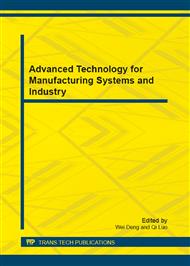p.1307
p.1312
p.1316
p.1321
p.1327
p.1333
p.1339
p.1344
p.1349
Research on Improvement the Second Harmonic Signal to Noise Ratio Using Pulse-Inversion Technique
Abstract:
Material degradation is usually preceded by nonlinear ultrasonic, and higher harmonics will be generated. The project studied the method to improve the second harmonic signal to noise ratio with pulse-inversion technique. A finite element method model of nonlinear was established by a special element which account for a nonlinear stress-strain relation. Calculation was performed for the influence of the pulse-inversion technique to ultrasonic nonlinearity parameters. The simulation results show that the second harmonic signal to noise ratio is obviously improved. Measurement method of nonlinearity parameters and signal processing algorithms with pulse-inversion technique were established, and a robust experimental procedure was developed. Using this method, ultrasonic nonlinearity parameters of a group of LY12 aluminum samples stretched were measured. The experimental results show that the pulse-inversion technique is very efficient in extracting this second-harmonic amplitude by canceling out the odd harmonics which are mainly due to the instrumentation. Introduction
Info:
Periodical:
Pages:
1327-1332
Citation:
Online since:
November 2012
Authors:
Price:
Сopyright:
© 2012 Trans Tech Publications Ltd. All Rights Reserved
Share:
Citation:


